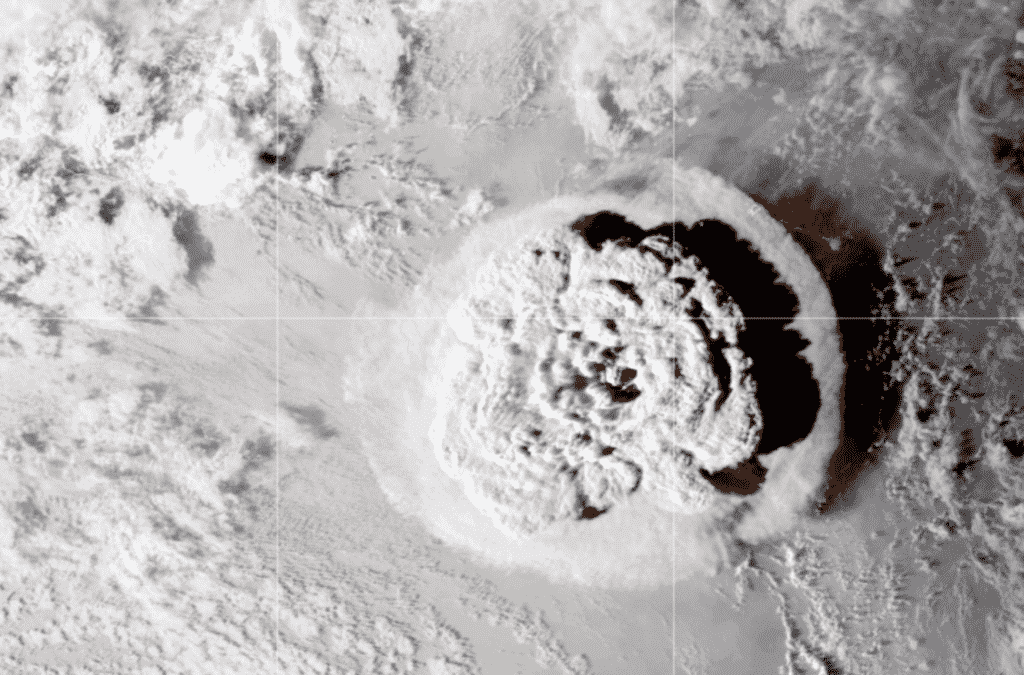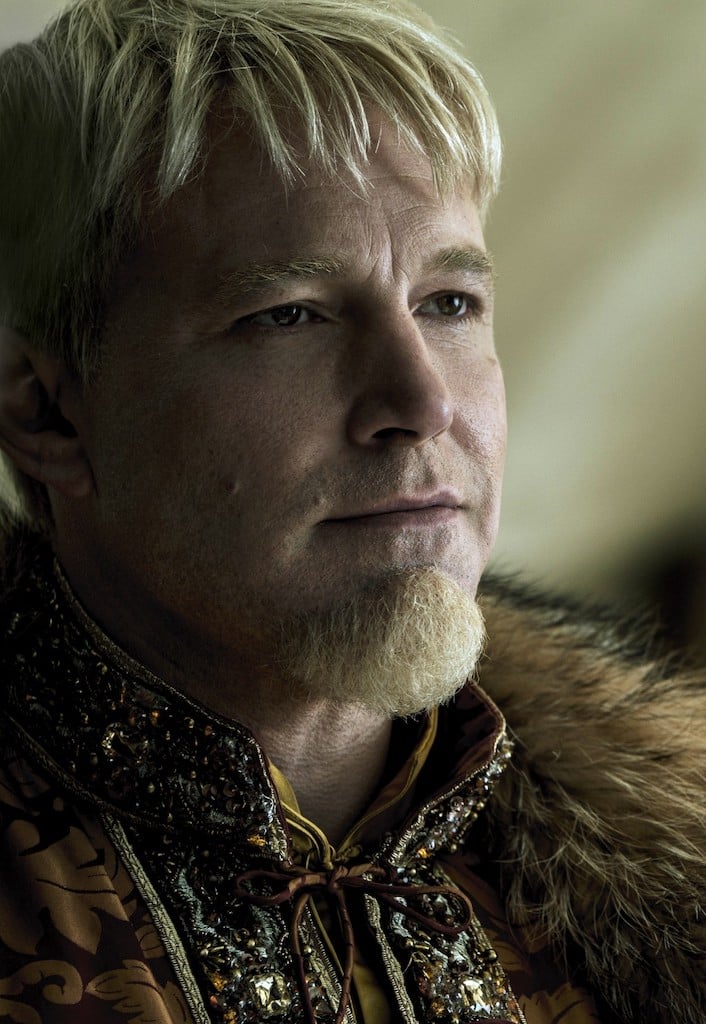Steve Burling’s Ha’atafu Beach Resort in Tonga no longer exists.
A long time ago, in a decade far far away, during a time called “The Nineties” SURFER Magazine did a boat trip to Tonga with Tom Carroll, Kelly Slater and your humble narrator.
At the time, Kelly Slater and Tom Carroll were two of the best surfers in the world, if not the two best surfers in the world. Incredibly, phenomenally Tiger Woods-skilled and athletic.
The crew enjoyed the hospitality of a local surf resort owner, Australian Steve Burling and his family. If memory serves he had a Tongan wife and at least three tall, lean daughters who looked destined to grow up into super models.
So what?
So it was a little shocking when that volcano went off somewhere in the Tongan archipelago and it was identified as the Hunga Tonga-Hunga Ha’apai volcano.
The Ha’apai part caught the eye and sure enough that volcano went off about 40 miles southwest of where TVC and Kelly went off, way back in the 1990s.
A massive volcano. Visible from space. The air disruption was measured in Miami Fricking Florida: More than 7000 miles away.

When Krakatoa went off way back in 1883 it released an estimated 200 megatonnes of energy – that’s 2000 pounds x 1,000,000 x 200 = 400,000,000,000 pounds of TNT.
The Hunga-Tonga Ha’apai volcano was possibly even bigger than Krakatoa.
And it shook up the world.
A displaced Californian named Tony Stincelli who lives on Vanua Levu island in Fiji “on the south side 10 kilometers west of Savusavu town, which is in the bay,” heard the rumbling from 500 miles away.
On Facebook, Stincelli said:
I’ll tell you ….. we’re 500 miles away and you wouldn’t believe the hour long explosions and shaking from it here. It was roaring thunderous ground shaking explosions for over an hour …. lots of small tsunami waves breaking across the lagoon out in front.
Displaced California surfer/coastal engineering PhD Jose Borrero was in Gisborne with his family when he thought he heard a distant thunder:
I didn’t hear the booms, but people around here did. I am in Gisborne on the east coast at the moment.
When the booms were happening I was trying to get my kids to stop talking and eat their dinner. Also, we were in a beach front house at the time and there was a lot of wind and a pretty big swell running, so there was a lot of white noise around. The people I know that heard it were a few km inland in a quiet forest area and they heard it over top of polite dinner conversation. They thought it was fireworks from a nearby speedway that does them on Saturday nights, but it was still daylight, so it didn’t make sense.
The next day we had a cyclone (Cody) spin by the coast about 200 km off shore and the swell got real big for a while (still too big now for the beaches out back). Maybe this afternoon or tomorrow morning the swell will clean up back to surfably fun levels.
But in all of that, the few people who have actually been to Tonga or know Tonga were concerned about the effect a 200 megatonne explosion 40 miles from the main island would have on the life and ecosystems of that distant archipelago.
A few days after the explosion, photos and news leaked out, showing the main island of Nuku’alofa covered in smoke and ash, and reports that the main communications cable linking Tonga to Fiji had been damaged or severed.
Your Humble Narrator was under the impression that Steve Burling’s Ha’atafu Resort was on the southwest end of the main island and so protected from the tsunami that washed ashore after the explosion.
I was wrong. Ha’atafu is/was located on the northwest peninsula of the main island, absolutely exposed to anything and everything thrown up by air and sea from Hunga Tonga.
An email to the Burling camp went out soon after, not expecting an answer because of the wrecked communications cable, but on Tuesday, January 18, an email showed up late in the PM:
Ha’atafu Beach Resort
Tue, Jan 18, 9:21 PM (13 hours ago)
G’day Ben,
Yes, I remember the Ha’apai trip with the crew from Surfer Magazine. Seems like yesterday.
Unfortunately our resort no longer exists. Totally wiped out by the tsunami. My daughter Moana and her family have been managing the resort in recent years and only barely escaped with their lives …. only got out with the clothes on their backs after risking their lives ensuring all guests were alerted to the impending danger and ushering them out of the resort. They didn’t even have time to jump in one of the 3 resort vehicles to drive to safety as the first waves hit the resort only 5 minutes after they heard the first explosion.
The volcano is located just 20 nautical miles (40km) off the Ha’atafu coast. All resorts and homes along the western coastline have been completely obliterated …. Only some foundations remain. The waves washed right across the peninsula and also wiped out two nearby villages. The western district of Tongatapu has been declared a disaster area.
All international telephone and internet communications are down due to the submarine cable between Fiji and Tonga being severed in two places by the eruption. Repairs are expected to take another 2 weeks (at the earliest).
I’ll include you in all future email updates.
Best regards,
Steve
So another tragedy from the explosion. After close to three decades and a lot of hard work and sweat equity and memories and good times, the Ha’atafu Beach Resort is no more.
All reduced to smoke and ash.
Steve Burling described the evolution and trials and tribulation and slings and arrows of Ha’atafu in an email:
Malo e lelei Ben,
The resort was established in 1979. We had a total of 12 accommodation fales. Category 5 tropical cyclones (hurricanes) seriously damaged our resort on 3 occasions … March 1982, January 1993 and the most recent was April 2020 …. but we always managed to pick ourselves up, dust ourselves off and rebuild.
All our family and friends are supportive of any effort we make to rebuild (again). However there are many hurdles we currently face …. the biggest being Tonga’s border closure due to covid. No international travel in or out of Tonga has been permitted for almost 2 years. Only Tongan seasonal workers in Australia and New Zealand have been allowed to travel on chartered flights. This makes any short-medium term planning very difficult as Moana and Hola will be overwhelmed at facing the challenge of rebuilding the resort by themselves …. especially after the traumatic experience they’ve just been through.
Another major issue is the state of Tonga’s tourism sector as there has been no international tourism for the past 2 years. Moana and Hola have done an amazing job of diversifying our resort operation to cater 100% to the Tongan domestic market. This has meant that we have been able to keep all 20 of our staff employed through this covid b/s …. we haven’t had to put any staff off which, for me, is the most important thing.
Our staff are the backbone of our business. They’re all dedicated hard workers and I’m absolutely gutted that they’re now facing unemployment because of this disaster.
We managed to speak by phone to Moana for the first time last night and she said that she had spoken to most of the other resort owners and people who had homes along the western coast. Like us, they too lost absolutely everything. Moana said that none of them are planning to rebuild. Given that volcanic activity at Hunga has been increasing in the past 15 years, it’s little wonder that people are reluctant to reinvest.
Tonga’s recovery? The seriousness of the disaster means Tonga will require a major foreign relief effort … this is already underway with both Australia and New Zealand sending military aircraft and naval vessels with emergency supplies of temporary shelter, fresh water, medical supplies and heavy equipment. This will be followed by aid programs to provide more permanent housing …. similar to aid that has been forthcoming in the past following damages from serious tropical cyclones.
All gone in 60 minutes. Mother Nature can’t be sued for damages.








